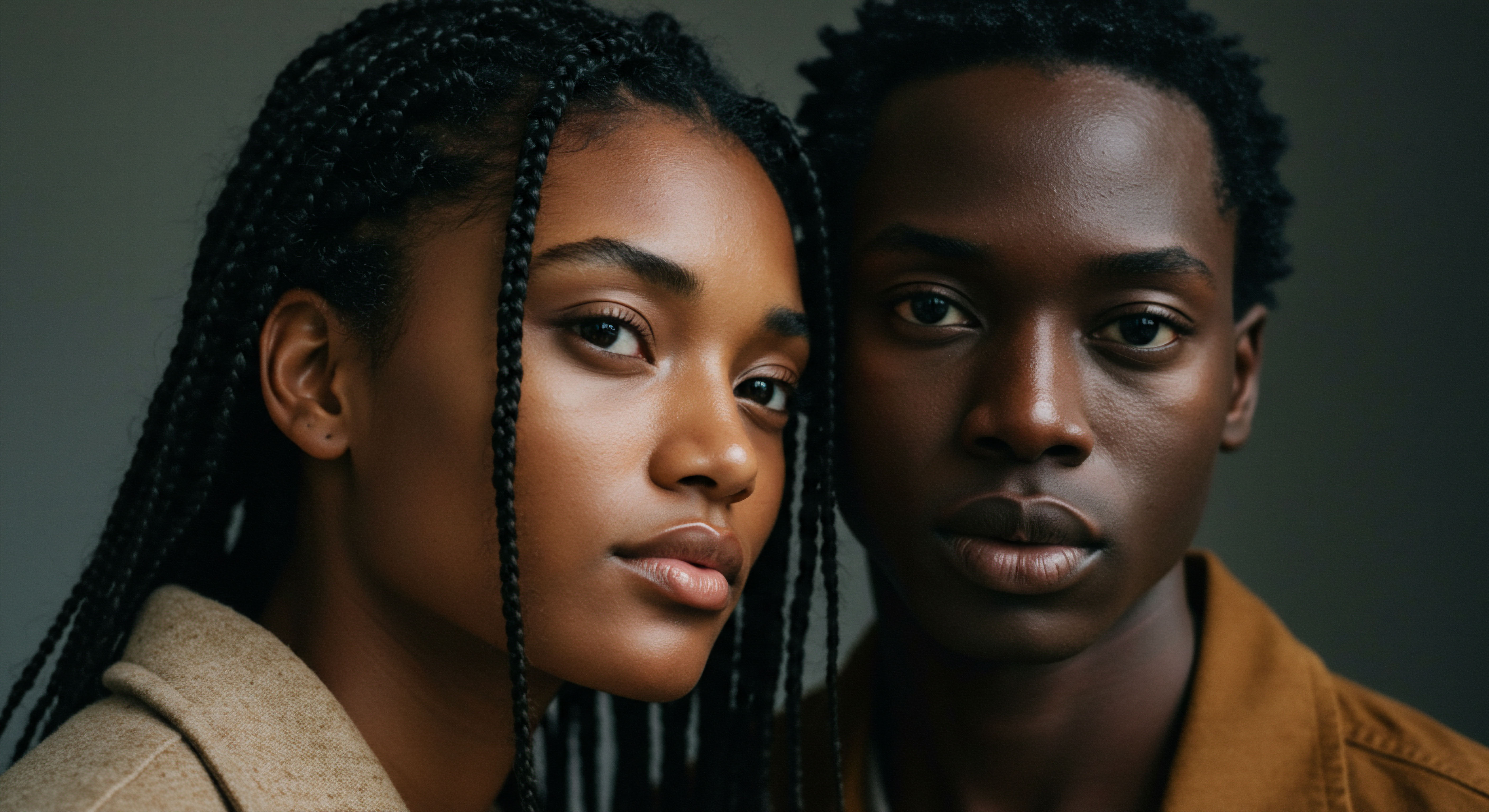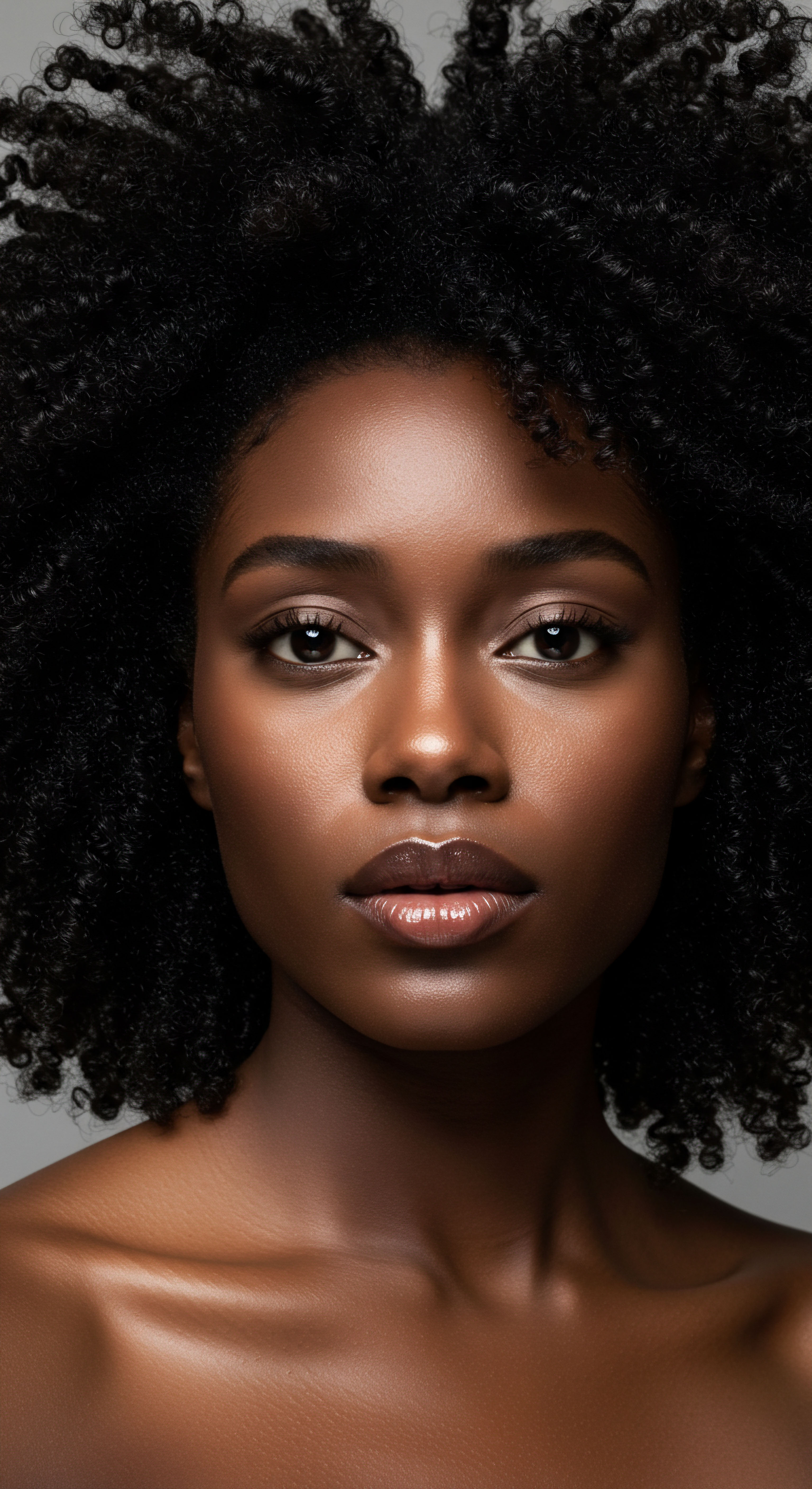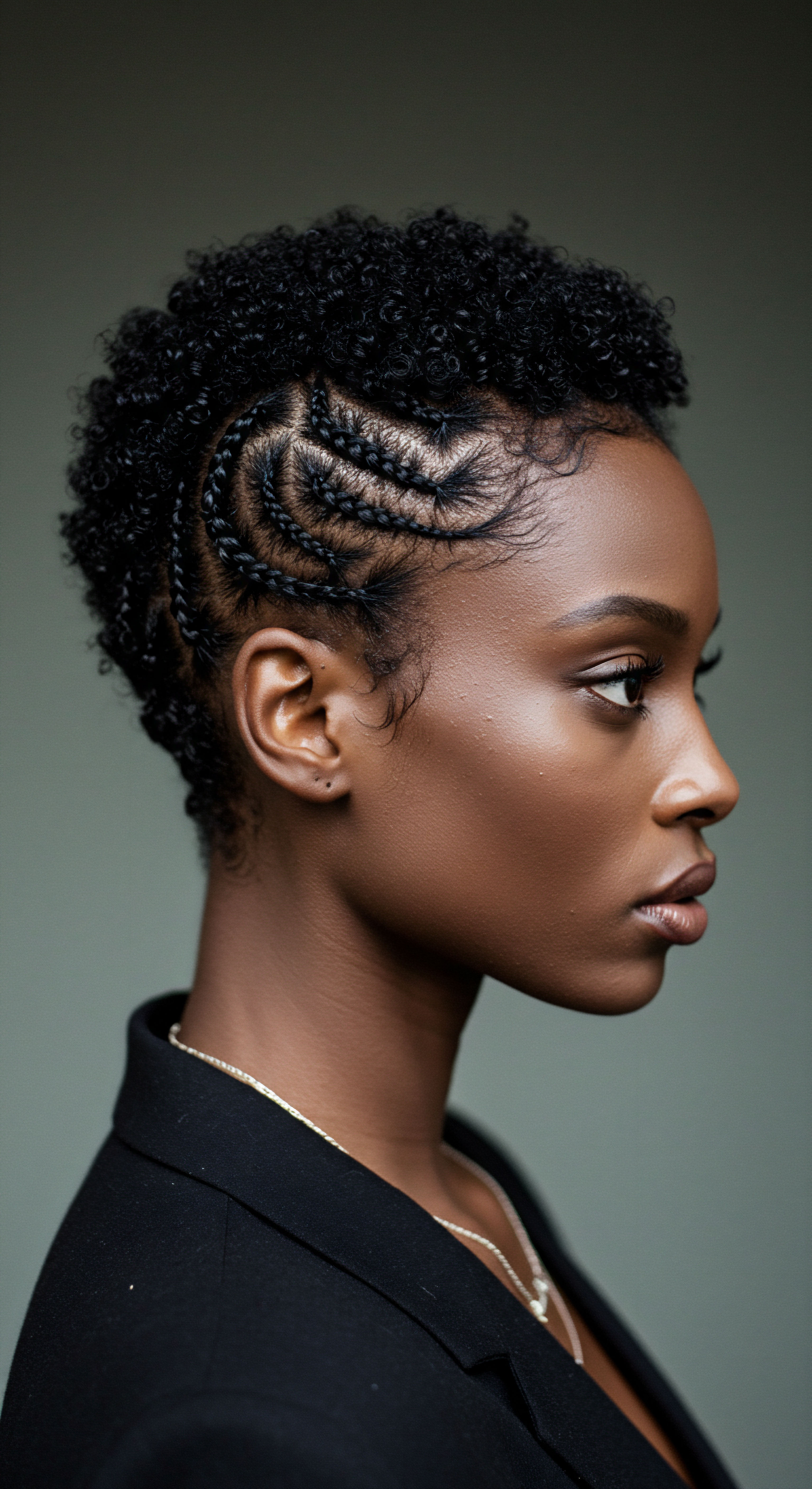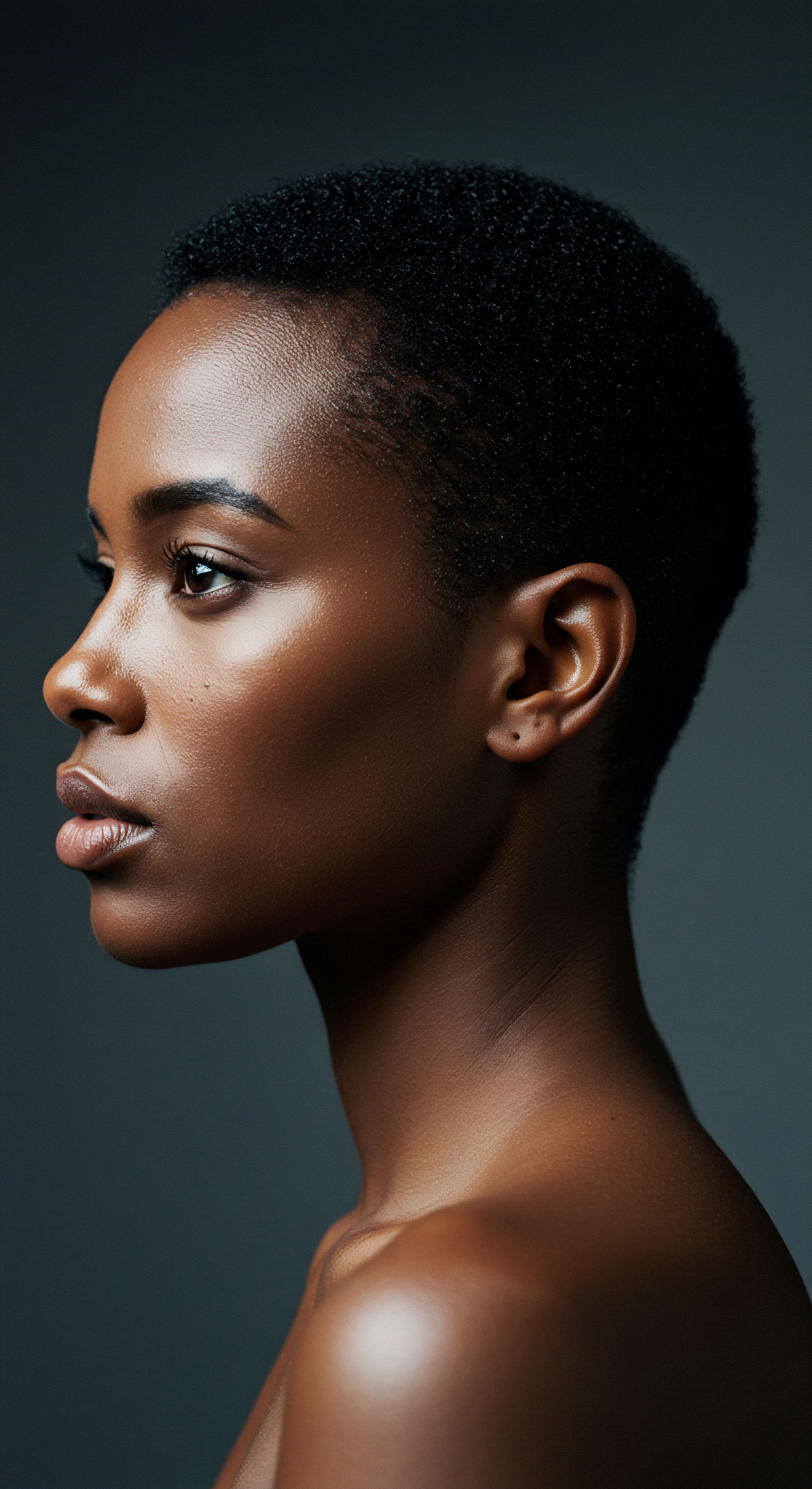
Roots
The quiet hours of night, when the world settles into slumber, might seem a time of repose for everything, including our hair. Yet, for textured hair, these hours historically presented a unique challenge ❉ the delicate coils and curls, while resilient in their spirit, are also prone to friction and moisture loss. Our ancestors, keenly attuned to the rhythms of their bodies and the wisdom passed through generations, understood this inherent vulnerability.
They observed how the hair, left unprotected, could become tangled, dry, or damaged by the restless movements of sleep and the absorbent nature of sleeping surfaces. This awareness was not merely about preserving aesthetics; it was about honoring the very vitality of the strands, recognizing hair as a conduit of identity, heritage, and well-being.
Long before the advent of modern haircare products and the scientific lexicon we use today, individuals across diverse cultures developed ingenious practices to safeguard their hair during sleep. These methods, often rooted in practicality and a profound respect for the body, formed a silent, nightly ritual. They reveal a deep, intuitive understanding of hair’s needs, anticipating what contemporary science would later confirm about cuticle integrity, moisture retention, and mechanical stress. The story of protecting textured hair overnight is therefore not a mere footnote in beauty history; it stands as a testament to human ingenuity and the enduring wisdom of ancestral traditions.

What is Hair’s Nightly Vulnerability?
To truly appreciate the historical methods of overnight hair protection, it helps to grasp the inherent characteristics of textured hair that make it particularly susceptible to damage during sleep. Textured hair, with its unique curl patterns, possesses an elliptical cross-section and often an uneven cuticle layer. Unlike straight hair, which has a smoother, more uniform surface, the bends and twists in textured strands mean that the cuticle scales are more exposed and prone to lifting.
This architectural distinction makes textured hair more susceptible to mechanical friction, which can occur as one moves against a sleeping surface. When these raised cuticles rub against rough fabrics, they can chip away, leading to frizz, breakage, and dullness.
Moreover, the natural oils produced by the scalp, which serve as a protective barrier and moisturizer, struggle to travel down the spiraling shaft of textured hair as effectively as they do on straight strands. This can result in drier hair, especially at the ends, making it even more vulnerable to moisture depletion. Overnight, absorbent materials like cotton pillowcases can draw moisture from the hair, exacerbating this dryness. The combination of structural fragility and a predisposition to dryness made nightly protection a practical and necessary endeavor for those with textured hair throughout history.
Ancient wisdom regarding hair’s nocturnal care reflects an intuitive understanding of its delicate structure and moisture needs.

Early Human Understanding of Hair Care
The earliest forms of hair care were intrinsically tied to survival and cultural expression. Archaeological evidence and anthropological studies suggest that human beings have been adorning and tending to their hair for millennia. This care extended beyond daytime styling to include methods for preserving styles and hair health during periods of rest. Early protective measures likely involved simple yet effective techniques.
- Braiding ❉ Tightly woven braids, often close to the scalp, were a common practice across many ancient African societies. These styles not only served as a social marker but also offered practical benefits. By gathering the hair into compact units, braiding reduced tangling and minimized the surface area exposed to friction while sleeping.
- Twisting ❉ Similar to braiding, two-strand twists or coils provided a contained structure for the hair, preventing it from rubbing against surfaces. These methods kept the hair elongated and somewhat stretched, which could also help maintain its natural pattern and prevent shrinkage.
- Wrapping ❉ The use of various materials to cover the head at night was a widespread practice. While specific fabrics varied by region and available resources, the underlying principle was consistent ❉ to create a smooth barrier between the hair and the sleeping surface. This barrier would reduce friction and help retain moisture.
These foundational practices were not arbitrary; they were born from generations of observation and adaptation, forming the bedrock of textured hair care that continues to influence modern routines. The wisdom of these early approaches highlights a deep connection to the body and its needs, long before scientific laboratories could quantify friction coefficients or moisture loss.

Ritual
Moving beyond the fundamental understanding of hair’s nocturnal needs, we step into the realm of applied wisdom ❉ the daily and nightly rituals that shaped how textured hair was preserved across civilizations. These practices were not merely functional; they often carried profound cultural significance, transforming simple acts of care into meaningful traditions. From the bustling markets of ancient West Africa to the serene households of the Caribbean, the nighttime preparation of hair was a moment of quiet dedication, a recognition of the hair’s sacred and vulnerable nature. It was a time when the hands, often of a mother, sister, or trusted elder, worked with intention, ensuring the hair was cocooned for the hours of rest, ready to greet the new day with vitality.
The techniques employed were diverse, reflecting the ingenuity of various communities, yet a common thread united them ❉ the desire to shield the hair from the rigors of sleep. This often involved specific manipulation of the hair strands, coupled with the thoughtful selection of materials to provide a gentle, protective environment.

What Specific Historical Techniques Protected Hair During Sleep?
Historical techniques for overnight hair protection centered on minimizing physical stress and retaining moisture. These methods were often passed down through oral tradition and practical demonstration, becoming an integral part of cultural identity.
- Plaiting and Braiding ❉ From the intricate cornrows of ancient African kingdoms to the simpler three-strand plaits, braiding was a primary defense. By binding the hair into a compact form, it prevented tangling and breakage that could occur from tossing and turning. Different cultures developed distinct braiding patterns for night, some looser to allow for scalp breathing, others tighter for maximum preservation of a daytime style. The act of braiding itself was often a communal activity, fostering bonds and sharing knowledge.
- Twisting Styles ❉ Two-strand twists, often called “finger coils” or “ropes,” served a similar purpose to braids. They were particularly effective for highly coiled hair, helping to stretch the strands gently and prevent them from shrinking and tangling into a dense mass overnight. These twists could be worn as individual sections or gathered into larger, more protective arrangements.
- Pinning and Bundling ❉ For those with longer textured hair, securing it into a bun or a series of pinned coils at the crown or nape of the neck was a common strategy. This kept the hair elevated and off the sleeping surface, reducing friction. Sometimes, these bundles were then covered with a fabric.
The selection of materials for overnight hair protection was as considered as the styling techniques themselves. Natural fibers played a crucial role in creating a beneficial sleeping environment for hair.
| Material Silk |
| Properties for Hair Smooth surface, reduces friction, non-absorbent, retains moisture. |
| Cultural Context Historically a luxury item, used by royalty and nobility in various cultures (e.g. ancient China, later adopted elsewhere). |
| Material Satin |
| Properties for Hair Smooth surface, reduces friction, often more accessible than silk. |
| Cultural Context Developed later, offered a more affordable alternative to silk for hair protection. |
| Material Plant Fibers (e.g. woven grass, soft cloths) |
| Properties for Hair Varied textures, could provide some barrier, breathable. |
| Cultural Context Indigenous communities used locally available, softer plant materials for wraps or head coverings. |
| Material Animal Skins/Furs (inner, softer side) |
| Properties for Hair Insulation, potentially smooth inner surface for some types. |
| Cultural Context Used in colder climates for warmth and some degree of protection. |
| Material These materials, chosen for their tactile qualities and availability, were fundamental in preventing nocturnal hair damage. |

What was the Role of Oils and Balms in Nightly Routines?
Beyond physical containment, the application of natural oils and balms was a central element of nighttime hair care. These substances served multiple purposes ❉ to condition, to seal in moisture, and to provide a slip that further reduced friction.
For generations, communities relied on the bounty of their local environments. In many parts of Africa, shea butter and various plant-derived oils, such as palm oil or coconut oil, were routinely applied to the hair and scalp before sleep. These rich emollients created a protective coating on the hair shaft, helping to prevent the loss of internal moisture to the dry air or absorbent bedding. The practice of oiling the hair at night was not just about hydration; it was also a form of gentle manipulation, often accompanied by scalp massage to stimulate circulation.
In some indigenous communities of the Americas, animal fats or plant-based infusions were used. For example, some Native American tribes used bear grease or cedar oil to coat and protect their hair, particularly during colder months, ensuring the strands remained pliable and strong. These applications were typically massaged into the hair and scalp, sometimes followed by braiding or wrapping.
Nightly application of natural oils and protective wraps formed a quiet, essential shield for textured hair against the friction and moisture loss of sleep.
These practices, though varied in their specific ingredients and expressions, shared a common philosophy ❉ that hair, particularly textured hair, required thoughtful, consistent care to remain vibrant. The nightly ritual was a time for restoration, preparing the hair to withstand the demands of the day.

Relay
To truly comprehend the historical ingenuity behind textured hair protection overnight, we must move beyond simple descriptions of practices and consider the deeper, interconnected scientific and cultural underpinnings. How did ancient methods, seemingly rudimentary, anticipate the complexities of hair science, and what profound cultural meanings did these nightly acts of care hold? The answers lie in a fascinating convergence of intuitive wisdom, environmental adaptation, and a societal reverence for hair as a living extension of self and heritage. This section delves into the subtle mechanics and significant symbolism that transformed basic protective acts into sophisticated, culturally embedded traditions.

How Did Ancient Practices Anticipate Modern Hair Science?
The protective practices of antiquity, though lacking formal scientific terminology, demonstrated an astonishing foresight into principles that modern trichology now affirms. The very essence of protecting textured hair overnight hinges on two primary concerns ❉ minimizing mechanical friction and preserving moisture balance.
Consider the widespread historical use of smooth coverings like silk or finely woven fabrics. While ancient people may not have understood coefficients of friction, they observed that certain materials allowed hair to glide rather than snag. Modern research confirms this intuitive understanding. A study comparing the frictional properties of various textiles, including silk and cotton, reveals that silk exhibits a significantly lower coefficient of friction than cotton.
For instance, the static coefficient of friction for silk can be around 0.21, while for cotton, it can be as high as 1.17 or more, depending on the weave and finish. This quantifiable difference means that as a person moves during sleep, hair experiences far less abrasive rubbing against silk than against a coarser material like cotton. The reduction in friction directly translates to less cuticle damage, fewer tangles, and a decreased likelihood of breakage, especially for delicate textured strands.
Furthermore, the choice of materials was often influenced by their hygroscopic properties—how they interact with moisture. Cotton, a highly absorbent fiber, readily draws moisture from hair, leaving it dry and brittle overnight. Silk, by contrast, is less absorbent, allowing hair to retain its natural oils and hydration levels.
This moisture retention is particularly vital for textured hair, which is already prone to dryness due to its structure. The historical use of silk scarves or head wraps, therefore, served as a sophisticated, albeit unarticulated, scientific intervention against nocturnal dehydration and mechanical stress.
The application of oils and balms also aligns with modern scientific understanding. These emollients act as occlusive agents, forming a barrier on the hair shaft that slows down transepidermal water loss. Saturated and monounsaturated oils, such as coconut oil or olive oil, can even penetrate the hair shaft, reducing the amount of water absorbed and minimizing hygral fatigue—the damage caused by repeated swelling and drying of the hair fiber. This practice, prevalent in many African and indigenous communities, provided a conditioning treatment that fortified the hair against the drying effects of the sleeping environment.

What Cultural Meanings Did Nightly Hair Care Rituals Hold?
Beyond their practical benefits, historical nighttime hair care practices were imbued with deep cultural and social significance. Hair, particularly textured hair, has always been more than mere adornment; it has served as a powerful symbol of identity, status, spirituality, and resistance across numerous societies.
In many African cultures, hair conveyed messages about age, marital status, social standing, and even spiritual beliefs. The nightly care of hair was often a communal affair, particularly among women, strengthening familial bonds and transmitting cultural knowledge from elder to younger generations. The act of braiding a child’s hair before bed, for instance, was not just about preventing tangles; it was a moment for storytelling, teaching, and connection, reinforcing cultural values and a sense of belonging. As explored in “Hair in African Art and Culture” by Sieber and Herreman, hairstyles themselves were complex systems of communication, and their preservation through nightly rituals was essential to maintaining these visual narratives.
The practice of covering hair at night, whether with a simple cloth or an elaborate headwrap, also held varied meanings. In some contexts, it was a gesture of modesty or respect. In others, it protected the hair from evil spirits or negative influences during the vulnerable state of sleep.
For enslaved Africans and their descendants, the headwrap, and by extension, the practices that preserved hair underneath, became a symbol of resilience and quiet dignity in the face of immense oppression. Despite attempts to strip them of their cultural identity, enslaved individuals maintained practices of hair care, often improvising with available materials, which speaks to the profound importance of hair as a connection to heritage.
Historical nighttime hair protection, especially with silk, significantly reduced friction and moisture loss, a wisdom validated by modern textile science.
The careful attention paid to hair before sleep was also a reflection of self-worth and communal pride. A well-maintained head of hair signaled health, care, and adherence to cultural norms. The rituals surrounding sleep preparation for hair were therefore acts of self-preservation, cultural continuity, and silent defiance against forces that sought to diminish identity.

Can Modern Science Reaffirm Ancient Wisdom?
The interplay between ancient practices and modern scientific understanding is a compelling area of study. While anecdotal evidence has long supported the benefits of materials like silk, contemporary research provides the quantifiable data. For example, a study examining hair damage during sleep found that the friction generated by cotton pillowcases can lead to cuticle lifting and breakage, whereas silk pillowcases significantly reduce this effect. This is not merely about preventing “bedhead”; it concerns preserving the structural integrity of the hair fiber itself.
Furthermore, the protective styling component, such as braids or twists, has been scientifically shown to minimize manipulation and exposure to environmental stressors, thereby promoting length retention. A study on hair care practices and scalp disorders in African-American girls highlighted that certain protective styles, when not excessively tight, could reduce the risk of traction alopecia by minimizing constant pulling on the hair follicles. This underscores the critical balance between protection and tension.
The historical understanding of hair’s fragility, particularly its vulnerability during sleep, finds a powerful echo in contemporary scientific findings. The consistent use of smooth coverings, the strategic application of oils, and the disciplined practice of protective styling were not accidental developments. They were intelligent responses to the physical realities of textured hair, honed over centuries, and now, illuminated by the lens of scientific inquiry, their efficacy is further underscored. This historical relay of knowledge, from ancient wisdom to modern validation, affirms the enduring value of these time-honored traditions.

Reflection
As the quiet hours of night descend, bringing with them the promise of rest, the enduring legacy of hair care practices for textured strands comes into gentle focus. We have traversed a path from the innate vulnerability of a single coil to the intricate rituals that protected entire communities. The story of safeguarding textured hair overnight is not a closed chapter; it is a continuous whisper across generations, a testament to resilience and adaptation.
Each braid, each careful wrap, each anointing with oil, represents a profound dialogue between human ingenuity and the natural world, a conversation that continues to resonate in our modern routines. The wisdom of those who came before us, grounded in observation and an intimate connection to their own unique hair, offers more than mere techniques; it offers a deeper appreciation for the profound significance of our strands, inviting us to approach our own hair with a similar reverence and thoughtful intention.

References
- Byrd, Ayana, and Lori Tharps. Hair Story ❉ Untangling the Roots of Black Hair in America. St. Martin’s Publishing Group, 2014.
- Sieber, Roy, and Frank Herreman. Hair in African Art and Culture. Prestel Pub, 1999.
- Schwartz, A. M. & Knowles, D. C. (1963). Frictional Properties of Human Hair. Journal of the Society of Cosmetic Chemists, 14(2), 79-88. (Cited in)
- Bhushan, B. et al. (2014). Friction and Adhesion of Human Hair. Journal of Materials Science, 49(1), 1-13. (Cited in)
- El-Messiry, M. et al. (2017). Effect of Different Textile Fabrics on Hair Friction and Static Charge Accumulation. Journal of Textile Science & Engineering, 7(3), 1-5. (Cited in)
- Rigoletto, Ray, and Tim Gillece. “A Survey of Test Methodology Used in Evaluating the Damage, Protection and Repair of Hair.” Plastic Surgery Key, 2016. (Cited in)
- Rucker Wright, D. M. et al. (2011). Hair Care Practices and Scalp Disorders in African-American Girls. Journal of the American Academy of Dermatology, 64(2), 333-340. (Cited in)
- Shetty, P. K. et al. (2014). Adverse Effects of Chemical Hair Straightening. International Journal of Trichology, 6(3), 112-115. (Cited in)
- Dias, M. F. R. G. (2015). Hair Cosmetics ❉ An Overview. International Journal of Trichology, 7(1), 2-15.